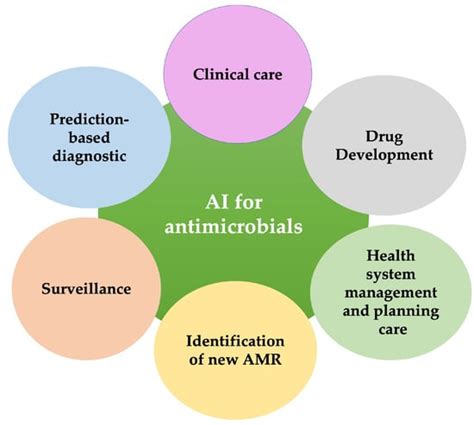Imagine a world where infections that were once easily treated by antibiotics are now becoming increasingly resistant to these life-saving drugs. This alarming scenario is a reality that researchers at Tulane University are confronting head-on with groundbreaking advancements in artificial intelligence (AI) technology.
Picture this: scientists at Tulane have recently unveiled a cutting-edge AI-based method designed to revolutionize the detection of genetic markers associated with antibiotic resistance in two formidable bacterial foes – Mycobacterium tuberculosis and Staphylococcus aureus. These findings, published in the prestigious journal Nature Communications, hold immense promise for enhancing the speed and efficacy of treatments for drug-resistant infections.
“Think of it as using the bacteria’s entire genetic fingerprint to uncover what makes it immune to certain antibiotics,”
explained Dr. Tony Hu, the Weatherhead Presidential Chair in Biotechnology Innovation and director of the Tulane Center for Cellular & Molecular Diagnostics. In essence, they have pioneered a Group Association Model (GAM) that harnesses the power of machine learning to pinpoint genetic mutations linked to drug resistance accurately.
Traditionally, methods used to identify antibiotic resistance have been plagued by inefficiencies and inaccuracies. For instance, culture-based testing can be time-consuming while some DNA-based tests may overlook rare mutations crucial for determining resistance patterns. However, Tulane’s innovative GAM approach circumvents these limitations by analyzing entire genome sequences and comparing different groups of bacterial strains exhibiting varying resistance profiles.
The beauty of GAM lies in its ability to transcend conventional tools by not relying on pre-existing knowledge of resistance mechanisms. This flexibility enables it to unearth novel genetic alterations that were previously unknown, thereby propelling precision medicine into uncharted territories.
Lead author Julian Saliba highlighted the significance of their research by stating,
“Current genetic tests might wrongly classify bacteria as resistant, affecting patient care.”
Their method offers a more nuanced understanding of which specific mutations drive antibiotic resistance, mitigating misdiagnoses and averting unnecessary adjustments in treatment plans.
Furthermore, when augmented with machine learning capabilities, GAM proves even more formidable at predicting resistance patterns from limited or incomplete data sets. Validation studies conducted using clinical samples from China underscored the superior performance of this enhanced model over conventional WHO-based approaches when forecasting resistance to key frontline antibiotics.
Early detection of antibiotic resistance is paramount as it empowers healthcare providers to tailor precise treatment regimens before infections escalate or become untreatable. By sidestepping the need for expert-defined rules in detecting resistance markers,
“This tool can help us stay ahead of ever-evolving drug-resistant infections,”
affirmed Saliba emphatically.
The implications extend beyond human health; this breakthrough holds promise for applications in agriculture where combating antibiotic resistance in crops is also a pressing concern. With infectious diseases constantly evolving and adapting mechanisms against our therapeutic arsenal, staying vigilant through innovations like Tulane’s AI-driven diagnostic tool is imperative for safeguarding public health worldwide.




Leave feedback about this